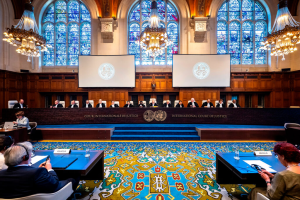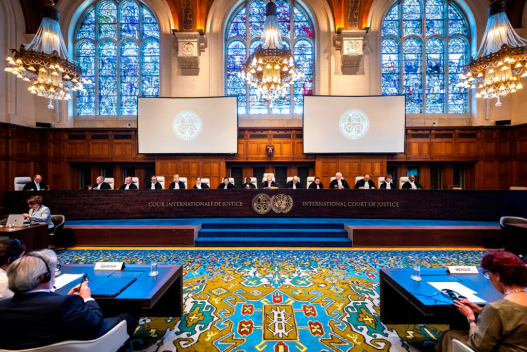
IS THE END OF THE LITIGATION IN THE INTERNATIONAL COURT BETWEEN ECUADOR AND MEXICO OVER JORGE GLAS?
By El Comercio, from Ecuador
The International Court of Justice rejected the request for precautionary measures against Ecuador. Other processes will still have to go through this judicial body.
The International Court of Justice (ICJ) issued a resolution on Ecuador’s precautionary measures this Thursday, May 23, 2024. Mexico’s request was requested before the Court in The Hague last April 30.
The conflict began on December 17, 2023, when Jorge Glas, who was facing several convictions and judicial proceedings in Ecuador, sought protection at the Mexican Embassy in Quito. Subsequently, Mexico granted him political asylum, a decision that was considered ‘illegal’ by Ecuador.
On April 5, 2024, tensions increased dramatically when Ecuadorian security forces entered the embassy without authorization, forcibly removed Jorge Glas and detained the deputy head of the mission. This incident led Mexico to break diplomatic relations with Ecuador and to take the case to the ICJ, requesting provisional measures to protect its diplomatic mission and personnel.
PLEADINGS BY MEXICO AND ECUADOR BEFORE THE INTERNATIONAL COURT OF JUSTICE
During hearings held on April 30 and May 1, 2024, Mexico argued that Ecuador’s actions represented a flagrant violation of international law, specifically the Vienna Convention on Diplomatic Relations.
Mexico requested the ICJ to order Ecuador to refrain from any action that could damage the Mexican diplomatic mission and to guarantee the safety of its facilities and personnel.
For its part, Ecuador defended its actions by stating that the entry into the embassy was an isolated incident motivated by the need to bring Glas Espinel to justice. In addition, Ecuador presented assurances to the ICJ that it would respect and protect Mexican diplomatic facilities and personnel in accordance with international law.
RESOLUTION OF THE INTERNATIONAL COURT
The ICJ, after reviewing the arguments and assurances provided by Ecuador, concluded that there was no real and imminent risk of irreparable harm to Mexico’s rights that would justify the adoption of provisional measures.
The Court stressed the importance of the inviolability of diplomatic missions under the Vienna Convention, but considered that Ecuador’s assurances were sufficient to preserve Mexico’s rights pending the resolution of the merits of the case.
This decision does not prejudge the merits of the case, which will still have to be dealt with by the ICJ in future stages of the proceedings. Both Mexico and Ecuador retain the right to present their arguments regarding jurisdiction, admissibility and merits of the case.
WHAT’S NEXT AT THE INTERNATIONAL COURT OF JUSTICE?
After hearing the closing arguments of the countries involved in the recent case brought before the International Court of Justice (ICJ), the legal process enters a new phase that will determine the finalization of the litigation.
PRIVATE DELIBERATION OF THE TRIBUNAL
Once the oral arguments are concluded, the ICJ judges retire to deliberate in private. This process of reflection and detailed analysis of the evidence and testimony may extend over several weeks or even months. This will depend on the complexity of the case and the amount of evidence presented.
It is important to note that deliberation at the ICJ is a collegial process. The 15 judges that make up the tribunal work closely together to reach a consensus on the ruling. While each judge has his or her own perspective and legal expertise.
DRAFTING AND DELIVERING THE JUDGMENT
During deliberation, the judges work on drafting a judgment that reflects their findings and final decision on the case. This judgment will not only address the central issues of the litigation, but may also include dissenting or concurring opinions of the judges, providing a complete picture of the court’s reasoning.
Once the drafting is complete, a date will be set for the public pronouncement of the judgment. At this hearing, a summary of the decision will be read and the actions to be taken by the parties involved will be announced.
IMPLEMENTATION, COMPLIANCE AND FOLLOW-UP
ICJ judgments are binding and the parties are obliged to comply with them. Although the court has no coercive mechanisms to enforce its decisions, diplomatic pressure and international reputation often motivate countries to abide by the court’s rulings.
In cases where differences arise during the implementation of the judgment, the ICJ may be called upon to resolve additional disputes or clarify aspects. This ensures that the judgment is enforced according to the terms dictated by the court.
————
This article was originally published in El Comercio, Ecuador, a member of EditoRed, with whose authorization we reproduce it here.



